Abstract
Results from studies of the retention of contrasting mineral dusts inhaled by rats (for periods of up to three months) and the resultant changes in the phagocyte defence system of the deep lung were examined. The dusts used were titanium dioxide (relatively innocuous) and quartz (relatively toxic). The parameters assessed included the accumulation of material in the lung and lymph nodes during chronic exposure and the associated leukocyte response as assessed by broncho-alveolar lavage. The principal findings were that: (a) low level exposure to titanium dioxide produced no measurable inflammation (as indicated by neutrophil recruitment) but higher concentrations (30, 50, and 90 mg/m3) caused the transfer of dust to lymph nodes and first evidence of inflammation; and (b) for quartz, there was a more prominent response and earlier transfer of material to the lymph nodes. The suggested relation between changes in the neutrophil population and dust accumulation is discussed in terms of a quantitative dosimetric model, from which implications for assessing and managing human exposures emerge.
Full text
PDF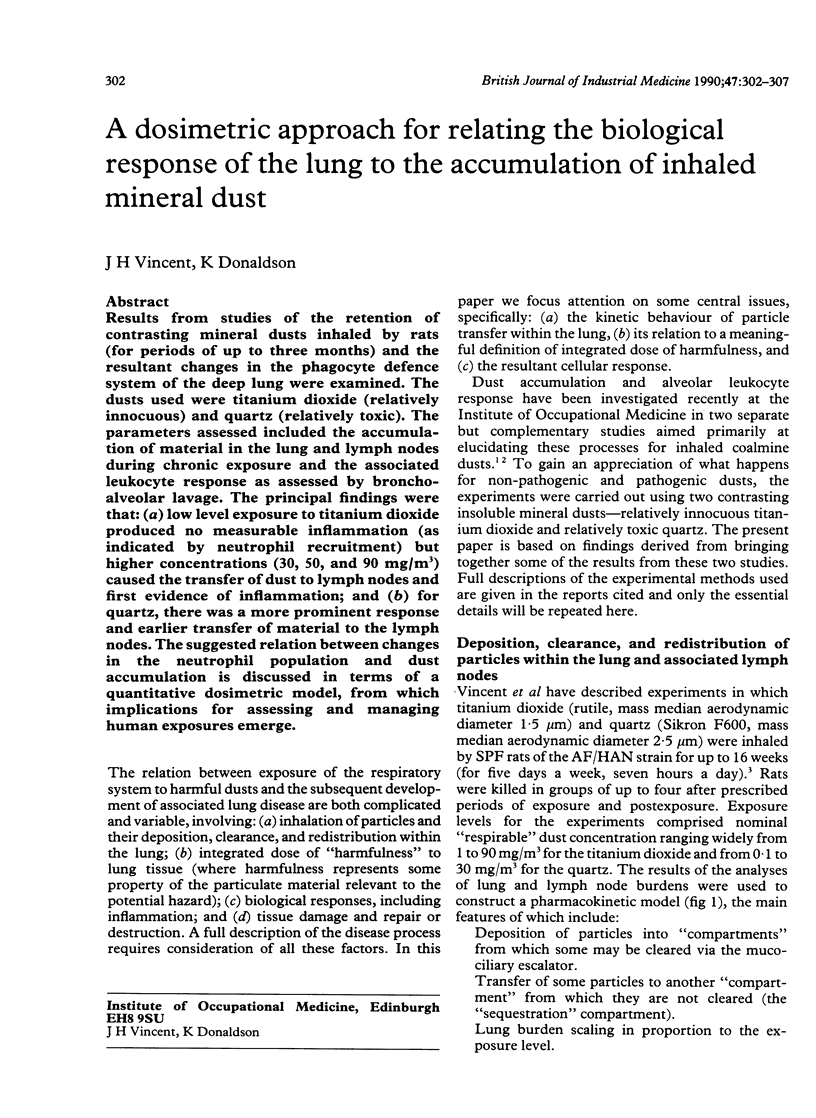
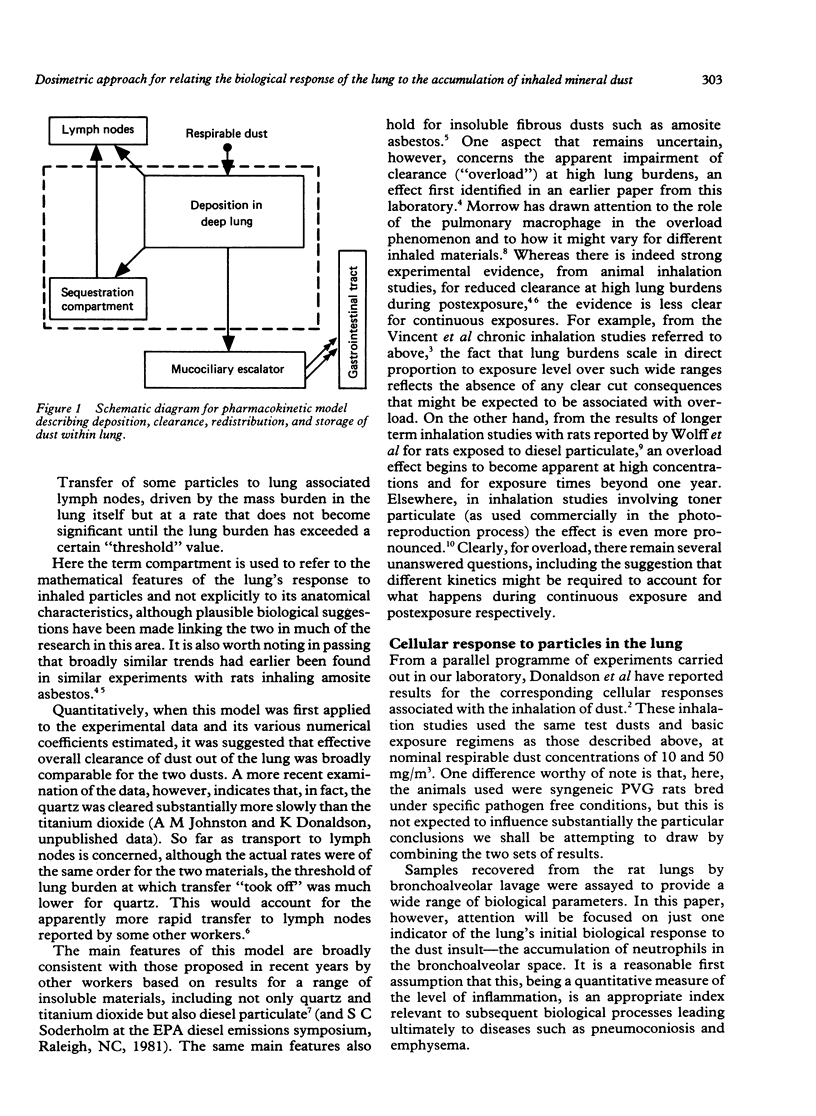
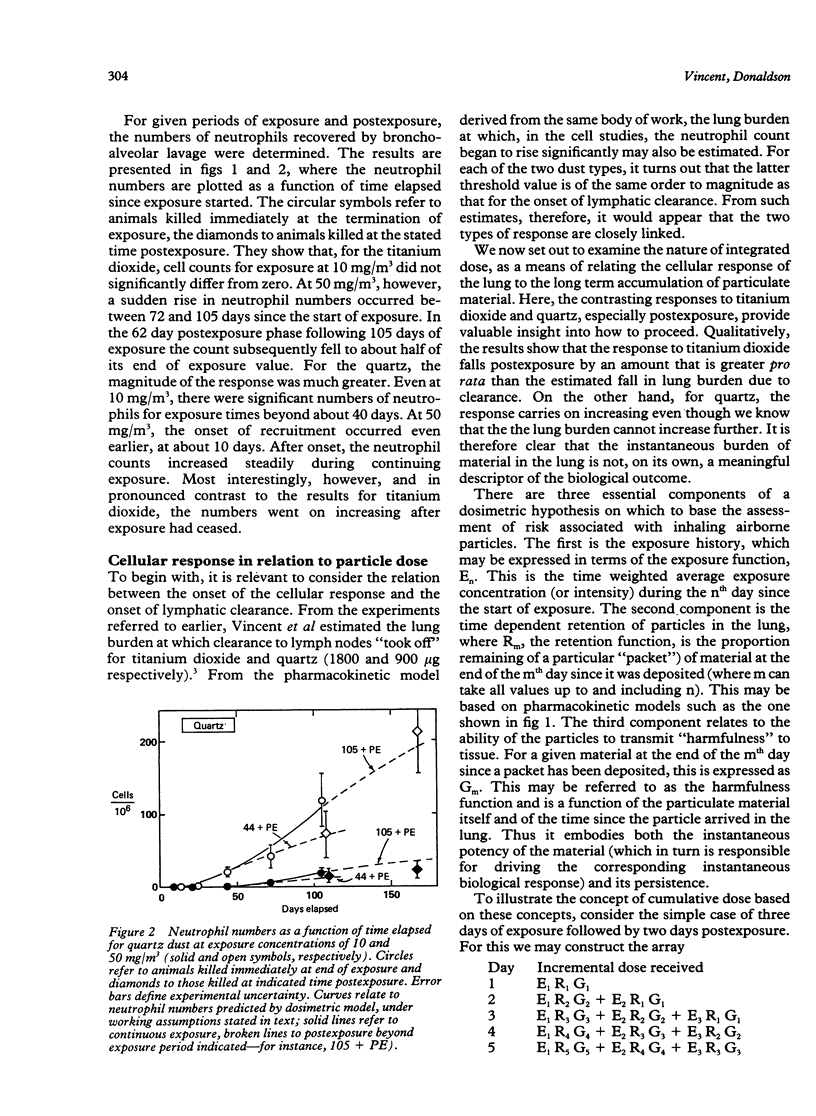
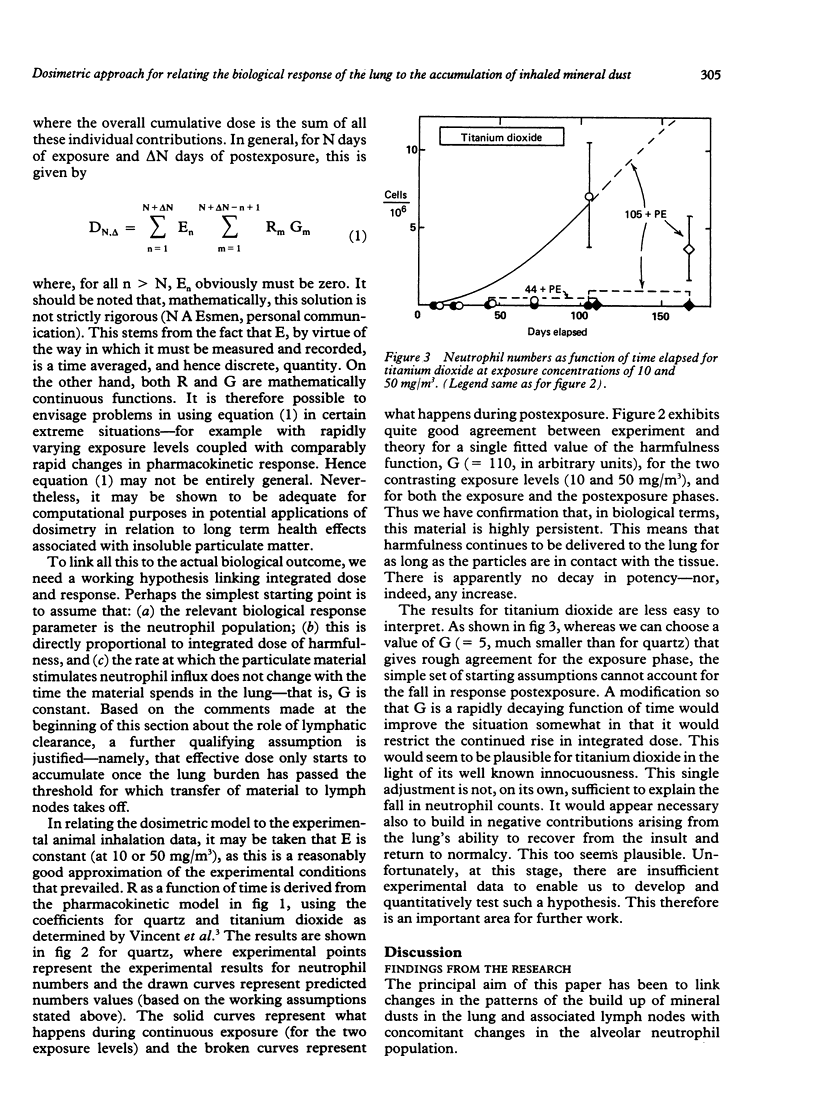
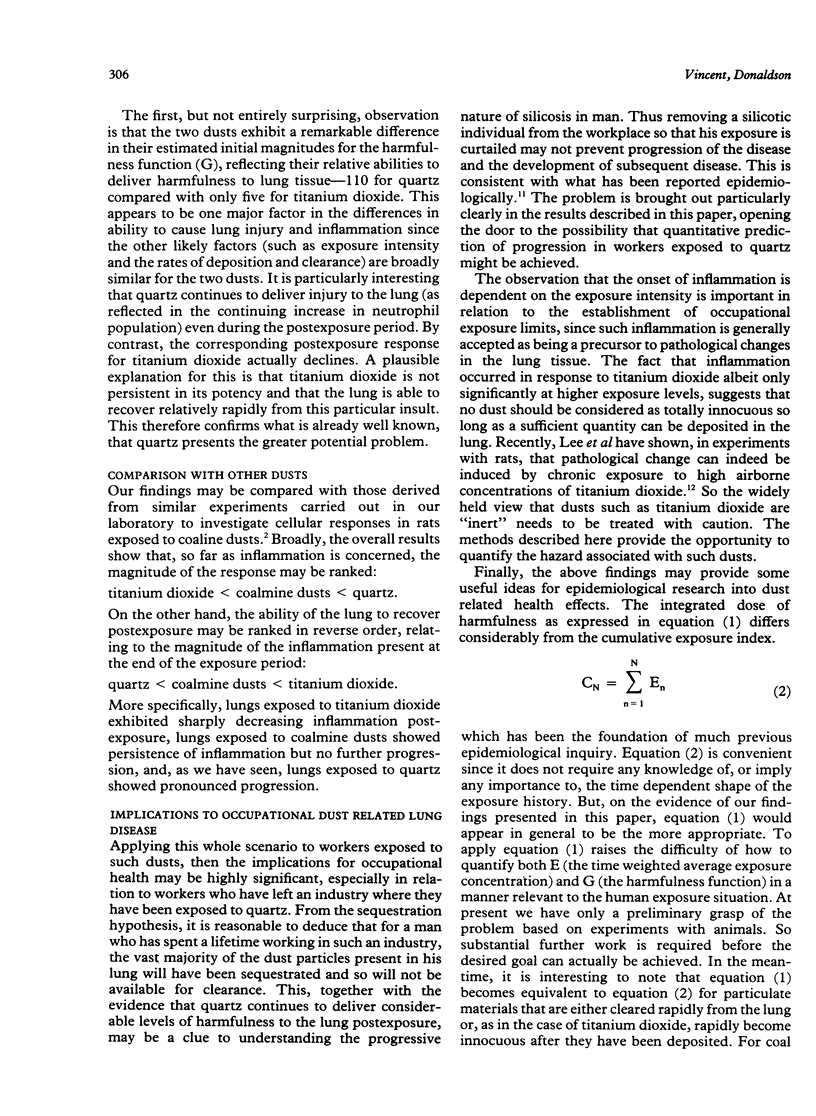
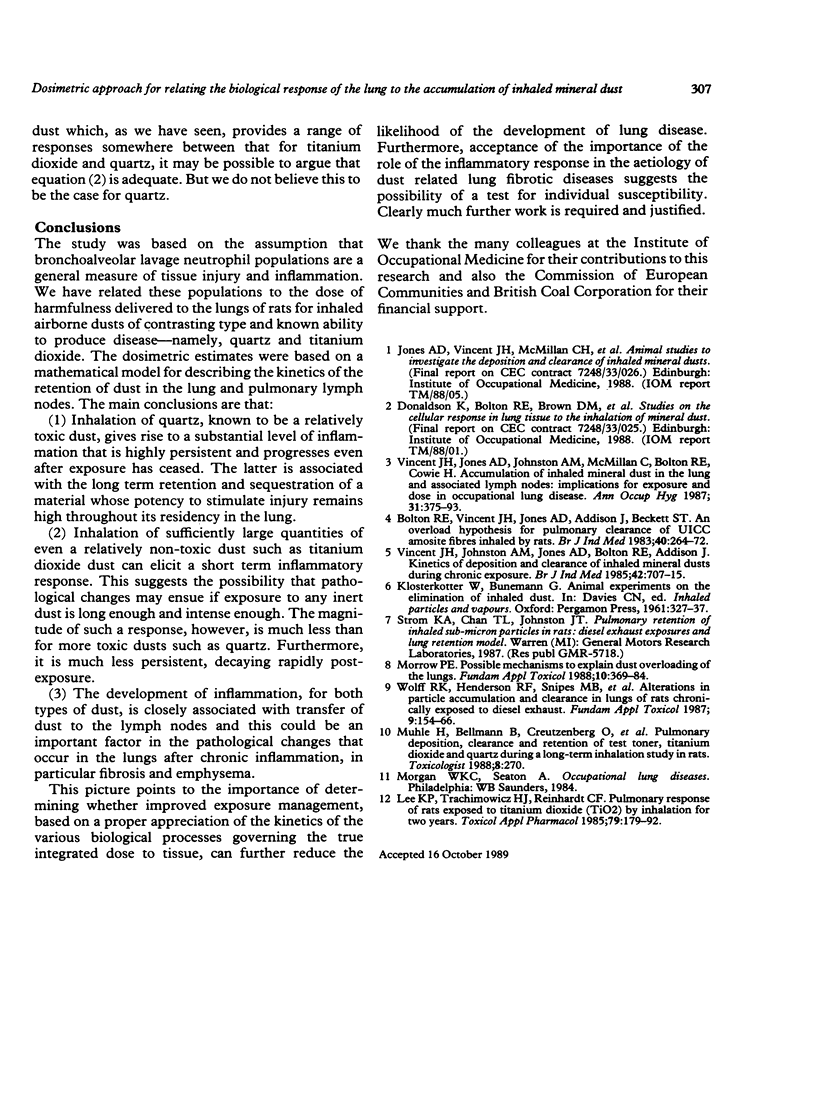
Selected References
These references are in PubMed. This may not be the complete list of references from this article.
- Bolton R. E., Vincent J. H., Jones A. D., Addison J., Beckett S. T. An overload hypothesis for pulmonary clearance of UICC amosite fibres inhaled by rats. Br J Ind Med. 1983 Aug;40(3):264–272. doi: 10.1136/oem.40.3.264. [DOI] [PMC free article] [PubMed] [Google Scholar]
- Lee K. P., Trochimowicz H. J., Reinhardt C. F. Pulmonary response of rats exposed to titanium dioxide (TiO2) by inhalation for two years. Toxicol Appl Pharmacol. 1985 Jun 30;79(2):179–192. doi: 10.1016/0041-008x(85)90339-4. [DOI] [PubMed] [Google Scholar]
- Morrow P. E. Possible mechanisms to explain dust overloading of the lungs. Fundam Appl Toxicol. 1988 Apr;10(3):369–384. doi: 10.1016/0272-0590(88)90284-9. [DOI] [PubMed] [Google Scholar]
- Vincent J. H., Johnston A. M., Jones A. D., Bolton R. E., Addison J. Kinetics of deposition and clearance of inhaled mineral dusts during chronic exposure. Br J Ind Med. 1985 Oct;42(10):707–715. doi: 10.1136/oem.42.10.707. [DOI] [PMC free article] [PubMed] [Google Scholar]
- Vincent J. H., Jones A. D., Johnston A. M., McMillan C., Bolton R. E., Cowie H. Accumulation of inhaled mineral dust in the lung and associated lymph nodes: implications for exposure and dose in occupational lung disease. Ann Occup Hyg. 1987;31(3):375–393. doi: 10.1093/annhyg/31.3.375. [DOI] [PubMed] [Google Scholar]
- Wolff R. K., Henderson R. F., Snipes M. B., Griffith W. C., Mauderly J. L., Cuddihy R. G., McClellan R. O. Alterations in particle accumulation and clearance in lungs of rats chronically exposed to diesel exhaust. Fundam Appl Toxicol. 1987 Jul;9(1):154–166. doi: 10.1016/0272-0590(87)90162-x. [DOI] [PubMed] [Google Scholar]


